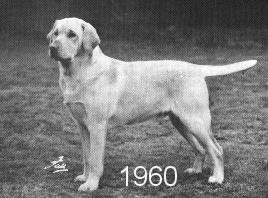
Lab Facts
The Labrador Retriever is a member of the Sporting class of dogs. They are considered to be 'flushing' dogs that retrieve both upland game birds and waterfowl after they have been taken down. The Labrador Retriever, despite its name, did not come from Labrador, but from Newfoundland. In the early 1800's, this Canadian province was populated with small water dogs, who, when bred with Newfoundlands, produced a breed referred to as the St. John's Water Dog or Lesser Newfoundland, a prototype of the Labrador Retriever of today.

.jpg)
In the 1830s, the 5th Duke of Buccleuch, Walter Francis Montague Douglas Scott, was one of the first to import these dogs from Newfoundland on to his estates in the Scottish Borders for use as gundogs because of their excellent retrieving capabilities. Another advocate of the Labrador Retriever was the 2nd Earl of Malmesbury who bred them for use in duck shooting on his estate at Heron Court on the south coast because of their skill at water fowling, their ‘close coat which turns water off like oil’, and their tail ‘like an otter’. During this period, Labrador Retrievers were interbred with other types of retrievers, but the Labrador breed prevailed, and fanciers drew up a definitive breed standard. Accurate pedigrees of Labrador Retrievers go back as far as 1878. In the early 1880s, the 6th Duke of Buccleuch and the 3rd Earl of Malmesbury met while shooting, and the first two entries in the Stud Book of the Duke of Buccleuch Labrador Retrievers were, in fact, the gifts made by Lord Malmesbury to the 6th Duke. When these dogs were mated with bitches descended from the dogs originally imported by the 5th Duke, a strong bloodline was developed, beginning with Buccleuch Ned in 1882 and Buccleuch Avon in 1885, that continues to this day. The Labrador Retriever was recognized as a distinct breed by the English Kennel Club in 1903. The first registration of Labrador Retrievers by the American Kennel Club was in 1917. A group of early Buccleuch Labradors, including Avon, Ned, and Gyp, is pictured below.

The photo below is of Sir Arthur Holland-Hibbert and his Labradors, including Munden Sentry and Munden Single, circa 1911.

English Dual CH Banchory Bolo (1917-1925) and and two notable descendents are pictured below.



From the 1920s through the 1930s, there was an influx of British dogs into the US, heavily influenced by bloodlines from the prestigious Sandylands Kennels that registered with the English Kennel Club in 1931 and helped to form the backbone of the breed in this country.



English FTCH Hayler's Defender
Gwen Broadley at her Sandlylands (Shotton) Kennels - 1930s. On the right is CH Sandylands Tweed of Blaircourt.


If you’ve spent any time reading or talking about Labs, you have almost certainly come across the terms ‘American Labrador’ and ‘English Labrador’. But what do these terms mean? How did these terms come about and become commonly used? Is one type better than the other? Neither the UK Kennel Club nor the AKC allow in their standard or recognize the difference between American and English Labradors. They simply do not differentiate between Labs - there is one Labrador Retriever Breed Standard. Labradors bred especially to hunt and compete in field-trials are selectively bred for their working abilities. High energy and drive, athleticism, and agility are the most desirable traits in a working Labrador. They’re bred with less regard for current conformation preferences and more for their ability to perform than a Labrador bred for show. A photo of a working/field Labrador Retriever is below:

Labrador Retrievers that compete in conformation competitions are selectively bred for a specific "look" that most closely matches the judge's subjective interpretation of the breed standard. Their ability to perform in field trials is secondary, at best. A typical show-type Labrador Retriever is pictured below.

At one time, a Labrador Retriever's conformation and working ability were equally important, with many breeders aiming for the prestigious ‘dual champion’ that would win in both the show ring and in the field. Today, we, at Tru-Heart Labradors, are working to re-establish this great tradition. Unfortunately, the practices of many other Labrador Retriever breeders have modified their breeding lines to produce a cumbersome, non-athletic dog that does not represent the "original breed type"






